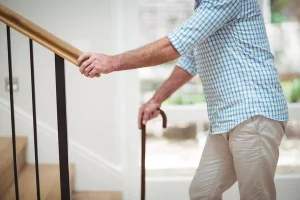
If you want to enjoy your retirement, you must find out what it means for you. Of course, you have to organize your money, make a budget and stick to it. But that’s not what retirement is all about. There are some healthy habits you can incorporate during this time to get a new direction in life.
Some retired people also fall victim to the trap of addiction, which is why rehabs like Infinite Recovery have a unique treatment program for older adults. Check https://www.infiniterecovery.com/drug-rehab-dallas/ for more details.
10 Healthy Habits for a Successful Retirement
Senior citizens have the right to live their retirement lives with dignity, passion, fun, and stability. In order to ensure these elements, the aged people must incorporate a few healthy activities in their daily routine once they retire.
If you integrate the following healthy habits into your life, you will not only stay physically fit but will also stay mentally sharp. So, let’s take a look at them here:
1. Practice Healthy Eating
Older people are prone to develop chronic diseases like heart issues, diabetes, arthritis, etc., and this is why a healthy diet is always recommended. A healthy diet for older adults consists of veggies, legumes, whole grains, dairy, lean meats, etc.
Once you retire, make sure you contact a nutritionist and get a healthy diet plan for yourself, and stick to that. It will make sure that you are not spending your post-retirement life in some hospital bed, but rather living peacefully in your home, among your loved ones.
2. Get a New Pet to Avoid Loneliness
Retired people often feel lonely at home because their partners may have passed away or their children are away from home. This is why you could consider getting a new pet because it will give you someone to take care of. It is essential for older people to feel needed, and once they get a pet, they enjoy not only the constant companionship, but the tasks of feeding, walking, and grooming, too.
The sense of being needed by someone can make retired people happy. Studies show seniors who are happy are less likely to have any trouble getting up, dressing, or taking a shower, so make yourself happy by getting a new pal.
3. Give Back To Community
You should give back to the community when you are retired. Now, by giving back, we are not saying you have to donate a lot of money, but you should do something beneficial for the community. You can take advantage of your good reputation in the locality and organize charity drives. Organizing a cleanliness campaign once a week is also helpful. If you want to visit the local youth centers and donate money to uplift its condition, you can do that too.
Senior citizens may find it uniquely satisfying to help others because they get to be part of a social network that is incomplete without them.
4. Exercise Regularly
Even if you live in an assisted living community, you should find time to exercise every day. Experts recommend moderate exercise of 30 minutes is suitable for people in older age groups.
Go for a morning walk, go swimming, or do other physical activities that will help balance your weight and prevent chronic diseases. Many senior citizens join older adult yoga groups to stay healthy. It also gives them a sense of purpose and belongingness with their peers.
5. Look for Passive Income Streams
Since you are retired, you live your life off of your savings, and that’s okay. But why not look for a passive income stream that will be flexible and versatile?
There are plenty of passive income streams online that anybody can take advantage of. Thus, you can earn some extra cash while not getting bored just sitting at home. Many seniors use affiliate marketing, sell digital products, invest in real estate, sell their valuable items, write a blogs, etc., to spend their free time and earn some extra money.
6. Make a Routine
Keeping your life bound by structure and routine is always good for staying healthy. In fact, seniors can have ample time to relax in the evening if they make a schedule and do their chores during the day.
Thus, you will have a sense of direction and a sense of purpose in your life even after your retirement.
7. Have an Active Social Life
Feeling lonely is common for older adults, which is why having a social life is necessary for their bodies and minds to function at an optimum level. Make friends with people who have similar interests and ignore any possible age gap. As the old saying goes, ‘Age is just a Number.’ Thus, you will constantly be updated on what is happening in the world.
8. Volunteer with Local Groups
Nonprofit organizations are always in need of volunteers. Find a cause that you care about and where you can be of service.
In addition to the benefit of giving back to the community, more than 50% of Americans believe their self-esteem increases when they use their skills and knowledge in volunteering somewhere.
Moreover, senior people can also volunteer with their family and friends, which will give them more time to spend with their loved ones.
9. Spend Time with Grandchildren
As a grandparent, you have the wonderful opportunity to contribute to your grandchildren’s childhood and upbringing. So make plans and spend as much time as possible with them because this is precious time you will never get back.
When you seek options to pass your days after retirement, spending time with your grandkids can be an excellent way to do that. You will get to be a part of their lives in a meaningful way and share your stories and experiences with them, which is beneficial to everyone.
If your grandkids are away, spend time with other local kids to help keep your inner child alive.
10. Enroll in a New Course
When senior citizens retire, they often look back at their lives and think of all the decisions they did not make or the things they did not do. Now that you have more time, this is a great opportunity to revisit your local community college and enroll in courses that interest you.
It may be that you worked in the banking industry all your life, but you have a fancy towards Victorian Literature. You can easily join a distance education course and get a new degree.
Don’t be afraid to think outside the box. Even if you don’t want to further your academic education, you could enroll in a new language or musical instrument class to simply give you joy.
Final Thoughts
A successful retirement life cannot be achieved if you don’t plan ahead of time. So you have to think of this phase as something to enjoy and plan your time accordingly. Once you adjust to retirement, you can make the most of the additional the free time and incorporate the habits mentioned above in order to live life to its fullest.









